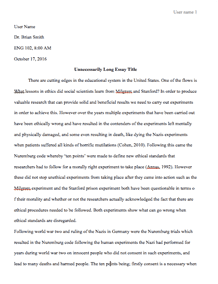The killing of a human being by another human being is what is referred to as homicide, and it falls under different categories. For instance, there is murder and manslaughter which have common points such as the killing act must be unlawful and incidences of self-defense make the killing act lawful, also the killing action must be exercised or done by a living human being and the causation which states that the defendant must be proved that he/she is the one who caused the victims death. This leads to two considerations that did the defendant cause death of the victim and if he/she caused, can he be held to have caused it within the law circle.
Murder is the illegal killing of another person without justifications. Murder is considered to be a serious crime in the society, and those charged with murder are expected to receive harsh punishment for the purpose of rehabilitation. In most countries, people accused of murder face long-term prison sentence with the possibility of the life sentence where permitted and may even face the death penalty in jurisdictions where capital punishment exists. Murder has got its elements that include unlawful killing, killing, through criminal act or omission (Byard, 2005).
The degree of murder involves a particular murder charge and comprises of first and second degrees of murder. First-degree murder is a deliberate planning, premeditation or malice and usually, its a serious form of crime. Deliberate means the defendant intentionally kills the victim while premeditation means before committing murder the defendant thought about killing. On the other hand, Second-degree murder involves malice killing without just or legal excuse, but without deliberation. There are incidences whereby the killing is not necessarily planned or intended, and this is what is referred to the as felony murder. Usually, this murder is accidental where someone might be frightened and falls off a high place during a robbery attack, and he/she dies it's considered as felony attack.
Intent to kill is referred to malice aforethought. It doesnt have to be expressed by the killer. Prosecutors prove intent to kill in court through implied from an action that says intent can be indicated by the defendant actions, depraved heart killings which can be satisfied intent to kill by expressing that the accused showed an extreme difference to human life. Also admissions and confessions through demonstrating that the accused wrote or communicated that he/she wanted to kill someone is a solid way of intent to kill and intending to kill someone else if the defendant intended to kill another person but instead murdered the victim thats sufficient for the murder charge. An example is that of Johnson versus Williamss case (Jensen, Gilbert & Byard, 2009).
Matthew Charles Johnson had a murder case in court after the murder of Carl Williams where he claimed before the jury that Carl Williams intended to kill him by bashing him with pool balls, and so Johnson responded by killing Williams to protect his family. Furthermore, Johnson says, Tommy Ivanovic who was like a brother to Carl Williams warned him that William was planning to attack him with pool balls and he took the threat seriously because William had killed many people. Johnson claims he acted in self-defense, but the jury rejected his claim Johnson crime was deliberate and premeditation because he never planned for the murder, but he knew he was going to kill Williams. According to constitutional law, William was killed with malice even though Johnson claimed it was self-defense, it was first-degree murder. This is because it was the deliberate and severe form of murder.
Simple negligence refers to a failure to use ordinary care. Regarding degree but not in kind, it is different from gross negligence. Gross negligence refers to voluntary and conscious disregard, likely to cause harm to persons, property or both. Civil liability refers to open punishment for a crime; potential responsibility for payment of damages. Also, there is voluntary manslaughter that occurs due to the provocation which leads to murder, involves action to incite an ordinary person to extend of losing self-control. It may equally occur when one person kills another unintentionally which means there was no intention to cause murder due to self-defense.
Voluntary manslaughter can be based on sudden passion, self-defense or unintentional killing.
Another type of killing is referred to as based on sudden passion where one person kills the other after adequate provocation, and there must be four needs. The provocation must be sufficient to incite an ordinary person to lose self-control, the provocation must cause the defendant to lose self-control, a time between provocation and killing must be a little time, and lastly, the defendant must have failed to be composed between the provocation and killing. Based on self-defense where one person is killed without malice because the defendant was defending him/herself and in the process, a person died (Binder, 2000).
Involuntary manslaughter occurs where one person kills another unintentionally but unlawfully without malice. Involuntary manslaughter can be based on negligence, misdemeanor manslaughter. Through negligence, if negligence causes death the person involved. The language used to describe a level of negligence depends on the state. Misdemeanor manslaughter if a person unintentionally causes death of another person, the person will be prosecuted for involuntary manslaughter (Jensen, Gilbert & Byard, 2009).
References:
Byard, R. W. (2005). Murder-suicide. Forensic pathology reviews, 337-347.
Jensen, L. L., Gilbert, J. D., & Byard, R. W. (2009). Coincident deaths: double suicide or murder-suicide?. Medicine, Science and the Law, 49(1), 27-32.
Binder, G. (2000). Felony Murder and Mens Rea Default Rules: A Study in Statutory Interpretation. Buffalo Criminal Law Review, 4(1), 399-485.
Request Removal
If you are the original author of this essay and no longer wish to have it published on the customtermpaperwriting.org website, please click below to request its removal:




